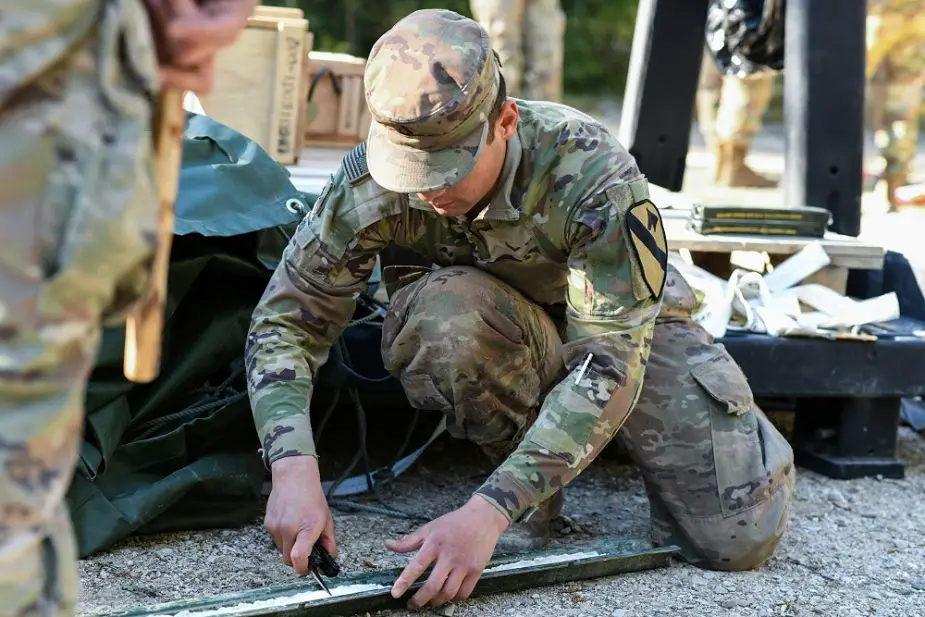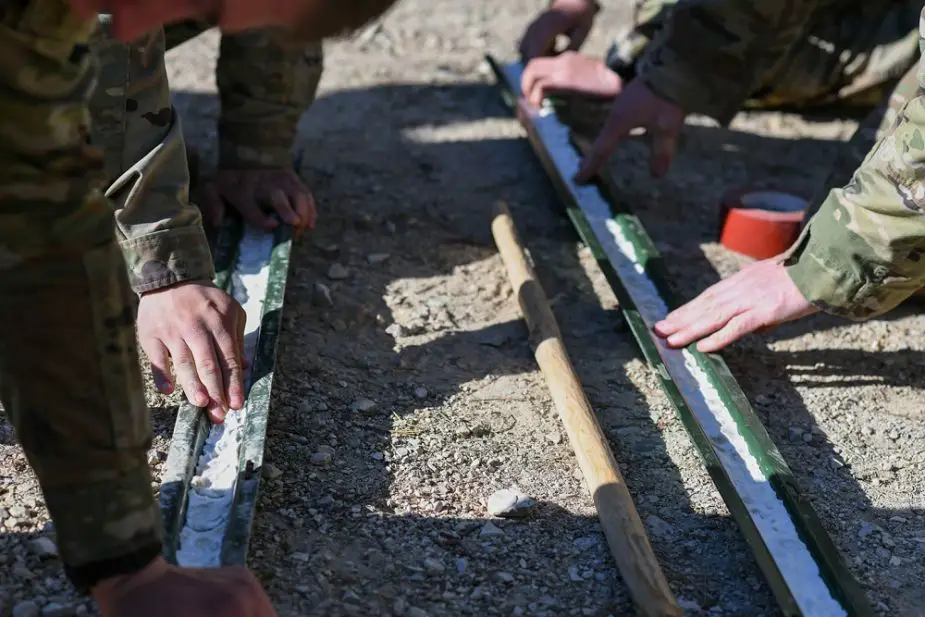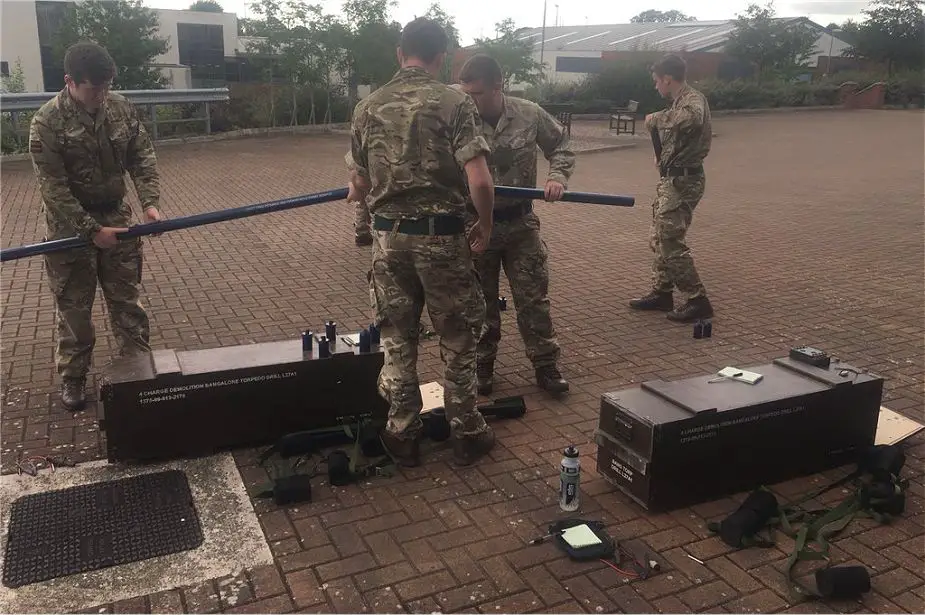Bangalore torpedo continues to be used by engineer troops of U.S. Army to clear obstacles and performs demolition missions. On April 23, 2020, U.S. Soldiers assigned to 2nd Brigade Combat Team, 1st Cavalry Division carried out demolition training exercise at the 7th Army Training Command's Grafenwoehr Training Area using improvised Bangalore torpedoes.

A U.S. Soldier assigned to 2nd Brigade Combat Team, 1st Cavalry Division prepares an improvised bangalore torpedo during demolition training at the 7th Army Training Command's Grafenwoehr Training Area, Germany, April 23, 2020. (Picture source U.S. Army photo by Markus Rauchenberger)
A Bangalore torpedo is an explosive charge placed within one or several connected tubes. It is used by combat engineers to clear obstacles that would otherwise require them to approach directly, possibly under fire.
The Bangalore torpedo was first devised by Captain R. L. McClintock, of the Royal Engineers while attached to the Madras Sappers and Miners unit of the Indian Army at Bangalore, India, in 1912. He invented it as a means of blowing up booby traps and barricades left over from the Second Boer War and the Russo-Japanese War.
During the World War 1, the Bangalore torpedo was primarily used for clearing barbed wire before an attack. The Bangalore torpedo was later adopted by the U.S. Army during World War II, as the "M1A1 Bangalore torpedo". It was used by the U.S. Army, notably during the D-Day landings. The Bangalore torpedo was also used by US Army and Vietnamese army during the Vietnam war.
Bangalore torpedoes continue to be used today by U.S. Army under the designation of M1A2 and M1A3 versions and the modified Advanced Performance Bangalore Torpedo version (British Armed Forces and Australian Defence Force, under the L26A1 designation which is also used by Chemring), primarily to breach wire obstacles.

U.S. soldiers use improvised Bangalore Torpedoes during a demolition training exercise in Germany. (Picture source U.S. Army photo by Markus Rauchenberger)
New Bangalore variants include the Alford Technologies Bangalore Blade and the Chemring Advanced Performance Bangalore Torpedo (APBT), with both of these having been developed in the United Kingdom. The Bangalore Blade is made from lightweight aluminum and is configured as a linear explosively formed projectile (EFP) array capable of cutting wire obstacles which earlier Bangalore variants were incapable of breaching effectively; the improvements introduced with the Bangalore Blade give the charge a cutting action as well as a blasting effect. In a test detonation conducted on the television show Future Weapons, the Bangalore Blade blasted a gap roughly five meters wide in concertina wire and created a trench deep enough to detonate most nearby anti-personnel mines.
The British Company Chemring Energetics has developed the Advanced Performance Bangalore Torpedo (AP Bangalore) for the British army. The traditional use for the ‘Bangalore Torpedo’ has been to defeat simple or complex entanglements made up of barbed or razor wire. The AP Bangalore incorporates a unique and patented design feature that enhances its cutting capability against these traditional non-resilient and incoherent target arrays. This design feature has also demonstrated cutting performance against a 6mm steel target. AP Bangalore can be joined with up to seven additional Bangalore Torpedo tubes for tactical deployment to defeat large or extended obstacles up to 8 meters in length.
The Chemring Energetics Bangalore Torpedo Tube assembles to the Detonator Housing, Nose cone and up to seven other tubes via a quick turn thread. The design of the thread has been optimized to ensure ease of assembly under conditions where the thread is contaminated with sand, soil, or mud, whilst being strong enough to allow the tactical deployment of up to eight connected tubes (without decoupling).
The Chemring Energetics AP Bangalore is designed with a universal detonator gland which is compatible with standard UK service Electric and Nonelectric detonators, Mini-shock tube, Detonating Cord Boosters (DCB) and Integrated Firing Device (IFD). The design of the detonator gland and detonator housing accepts detonators up to 7.7mm in diameter. The DPX10 fill of the detonator housing permits the use of a pilot hole to accommodate a wide range of detonator lengths.

British soldiers Assault Pioneer platoon conducting drill Bangalore torpedo training (Picture source Twitter account CO_2RIFLES)














